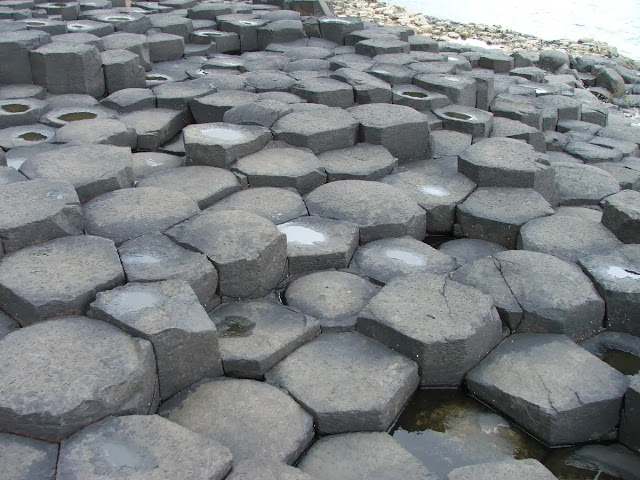What Happens When Lightning Strikes Sand
When lightning strikes sand, it releases an extraordinary burst of energy, generating temperatures as high as 30,000 Kelvin (54,000°F)—hotter than the surface of the Sun. This immense heat melts the silica (quartz) in the sand almost instantly, transforming it into molten glass. This rapid process creates fulgurites, often called "fossilized lightning."
Sand is primarily composed of silica (SiO₂), usually in the form of quartz, a crystalline material with a high melting point of around 1,700°C (3,092°F). Some sands may also contain minerals like feldspar, calcium carbonate, or organic material, which can influence the final appearance of the fulgurite.
 |
Fulgurite, a natural glass tube formed when lightning strikes sand. |
How it works
Intense Heating: The lightning strike raises the temperature far beyond the melting point of silica, instantly turning the sand into molten glass.
Vaporization of Impurities: Moisture and impurities in the sand vaporize almost immediately, leaving behind hollow or porous sections in the structure.
Fusion of Sand Grains: The molten silica cools rapidly, fusing the sand grains together and forming glassy, tube-like structures. The surrounding cooler sand acts as a heat sink, helping the molten material to solidify quickly.
Shape and Structure: The lightning's energy travels through the sand along the path of least resistance, creating branching, tree-like patterns.
The result is a unique, lasting record of the lightning's power. Fulgurites, with their intricate branching shapes, serve as natural artifacts, providing a glimpse into the extreme forces unleashed during a lightning strike.
What Do Fulgurites Look Like
Fulgurites are fascinating natural formations that often appear as long, twisted tubes with a rough, sandy exterior and a smooth, glassy interior. Their structure mirrors the path of the lightning that created them, with some fulgurites displaying intricate, branching patterns that resemble tree-like structures. The size of these formations can vary widely, depending on the strength of the lightning strike. Smaller fulgurites may be just a few inches long, while larger ones can extend several feet underground, following the bolt’s path through the sand.
The color of fulgurites is influenced by the mineral composition of the surrounding sand. They can range from gray or black to greenish, depending on the types of minerals and impurities present. Some fulgurites can even appear clear, reflecting the purity of the sand or specific chemical reactions during their formation. Their glassy interior surfaces are often smooth and shiny, while the outer layer tends to be rough and porous, as it forms from the rapid cooling of molten material.
Despite their fascinating appearance, fulgurites are fragile and can break easily.
 |
Fulgurites showcasing various shapes, sizes, and colors, formed by lightning strikes in different environments. |
Significance of Fulgurites
Fulgurites are valuable to both scientists and collectors. They offer insights into the high-energy interactions between lightning and Earth materials and provide a record of historical lightning activity. Geologists study them to better understand ancient weather patterns and the environmental conditions in which they formed.
Fulgurites are not just scientific curiosities—they're enduring reminders of nature’s raw power, capturing the fleeting, transformative force of a lightning strike.
 |
A natural fulgurite, still partially embedded in the ground, after it was excavated. |
Summary
In summary, when lightning strikes sand, the extreme heat and energy cause the sand to melt, fuse, and form unique glassy structures called fulgurites. These fascinating formations capture the path and energy of the lightning bolt, preserving a natural record of the event.




%20(1).webp)




